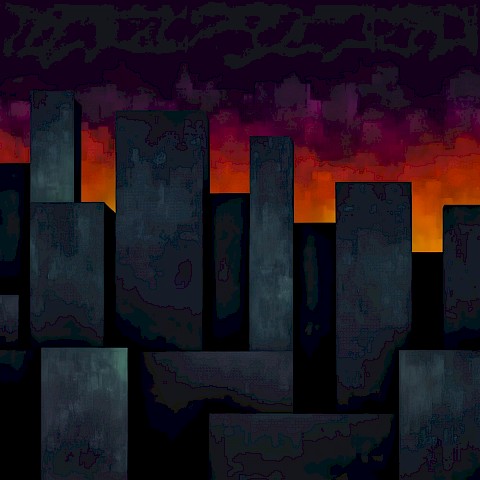|
31 VII 2025 |
12. Rome and After 1828-35
474 - Regulus | |

| ||
|
One of the paintings, like 'Orvieto' (see No.472), known to have been painted and exhibited in Rome in 1828, but considerably re-worked before being exhibited again in 1837. The young Sir John Gilbert (1817-97): having a picture opposite Turner's in the British Institution, observed Turner at work on it. 'He was absorbed in his work, did not look about him, but kept on scumbling a lot of white into his picture - nearly all over it. ... The picture was a mass of red and yellow of all varieties. Every object was in this fiery state. He had a large palette, nothing on it but a huge lump of flakewhite; he had two or three biggish hog tools to work with, and with these he was driving the white into all the hollows, and every part of the surface. This was the only work he did, and it was the finishing stroke. The sun, as I have said, was in the centre; from it were drawn - ruled - lines to mark the rays; these lines were rather strongly marked, I suppose to guide his eye. The picture gradually became wonderfully effective, just the effect of brilliant sunlight absorbing everything and throwing a misty haze over every object. Standing sideway of the canvas, I saw that the sun was a lump of white standing out like the boss on a shield' (Gage 1969, p.169). A small oil by Thomas Fearley shows the scene (repr. Gage 1969, pl.30). The composition is a Claudian seaport of the kind sketched by Turner at probably much the same time as he first worked on this picture (see No.479) and the colour also resembles the rather unusual colour of these sketches. The absence, among the scene of activity, of any figure actually identifiable as Regulus has been fascinatingly explained by John Gage (p.143): Regulus, having deliberately failed to negotiate an exchange of prisoners with the Carthaginians, returned from Rome to Carthage and was punished by having his eye-lids cut off and being exposed to the sun, which blinded him. The spectator stands in the position of Regulus, with the sun shining out of the picture full in his face. All the same, the Literary Gazette for 4 February 1837 wasted some space in speculating on the whereabouts of the protagonist, despite recognising that the 'sun absolutely dazzles the eyes'. 'Nevertheless', wrote the critic, 'who could have painted such a picture but Mr. Turner? What hand but his could have created such perfect harmony? Who is there so profoundly versed in the arrangement and management of colours?. The Spectator for 11 February made an interesting comparison with Claude: 'Turner is just the reverse of Claude; instead of the repose of beauty - the soft severity and mellow light of an Italian scene - here all is glare, turbulence, and uneasiness. The only way to be reconciled to the picture is to look at it from as great a distance as the width of the gallery will allow of, and then you see nothing but a burst of sunlight. This is scene-painting - and very fine it is in its way? An image generated by an AI Machine Learning Model Property of the artist. | ||
